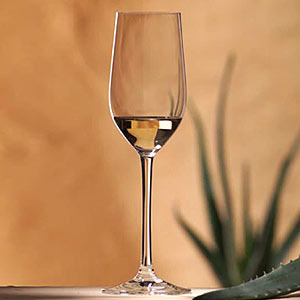Fine Tequila is Like Fine Wine – How to Taste Tequila
Written for Señor Ernesto Delgado
Fine Tequila is very much like fine wine – and should be tasted in a similar manner.
Soils, weather and elevation produce very different, and distinct tequilas. Tasting tequila is something to be savored, and understanding the process will help you truly have a memorable experience.
In the valley lowlands of Jalisco, the days are hot and nights can be very warm. The soil is loamy, dark and volcanic. Tequilas produced from Agave grown in the valley tend to be slightly spicy.
The Jalisco highlands also enjoy warm days, but the nights are cooler and the area gets more rainfall. The soil is red clay. Highland tequilas are typically a bit more floral, with a mineral quality.
How to Taste Tequila
It goes without saying that fine tequilas are 100% Agave. Master distillers study for years to produce a high-quality tequila from the Blue Agave plant. While many good quality ‘production’ tequilas exist, for a true ‘tequila experience’, we recommend you try the small-batch, artisanal tequilas.
Tequilas are categorized as blancos, anejos and reposados. The blancos are not aged, which allows you to experience the ‘Tequila Terroir’ more clearly than with the anejos and reposados, which have been aged in barrels.

- Aroma affects taste. For this reason, a glass that tapers from the bowl and narrows toward the top is ideal. Brandy snifters, or ‘tequila glasses’ will help channel the aroma and bouquet directly to the nose.
- Swirl the tequila gently in the glass. Notice the ‘legs’, or ‘tears’ of the tequila as it cascades down the inside of the glass. The ‘legs’ on an aged tequila will travel more slowly than that of a blanco.
- Notice the aroma of the tequila. The lower rim holds the basic elements of the tequila. In the mid-section of your glass, you’ll find the dominant notes. The upper rim reveals the secondary notes, such as spice, floral or herbal.
- Take a small sip. Swirl it around on your tongue. Breathe in to capture the aroma and taste together. A blanco will usually have a stronger Agave flavor and a bit more ‘bite’. You might notice citrus or herbs. An anejo will be smoother – similar to a fine cognac. With anejos, flavors may be cinnamon, caramel, chocolate or coffee. Some even taste slightly like banana or nuts. Reposados will most often be a balance between the two. With these, you may detect oak or vanilla. The reposado and anejo texture will be creamier and silkier than the blanco.
- Just like with wine tasting, avoid consuming strong tasting foods just before tasting. Don’t wear perfumes or scented lotion.
- You may cleanse your palate between tequilas with a small glass of water.
- You’ll be able to taste the complexities of each tequila far better if you don’t taste too many at a time. Four or five is ideal. Beyond that, you may lose a little of your ability to recognize the subtle nuances of each.
Most of all, savor the experience. Tequila tasting is meant to be a sensual, enjoyable experience – one during which you’ll most certainly discover new ‘favorites’.
Senor Ernesto Delgado, Owner and Operator of Mayahuel, is a true Tequila Aficionado. His focus is on ultra-premium, primarily small-batch artisanal Tequilas which showcase the beauty of the Agave, the meticulous process from field to glass, and exemplify the passion of a culture.
To learn more about our tequilas at Mayahuel, click here.

+ There are no comments
Add yours